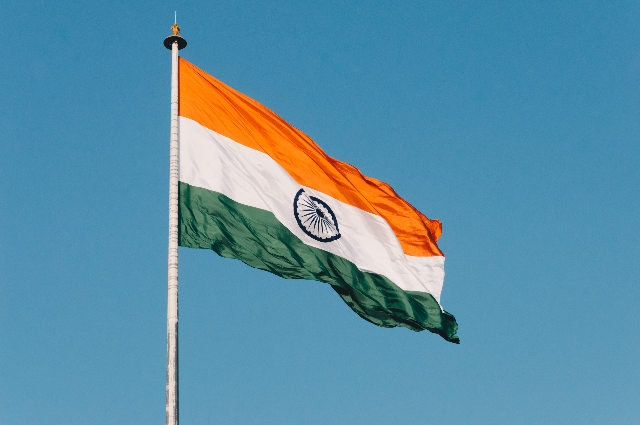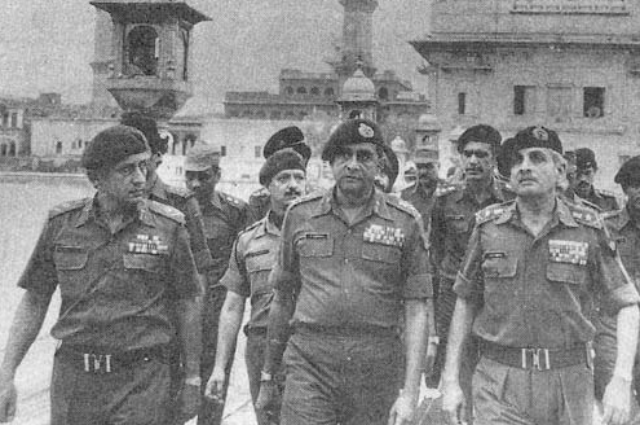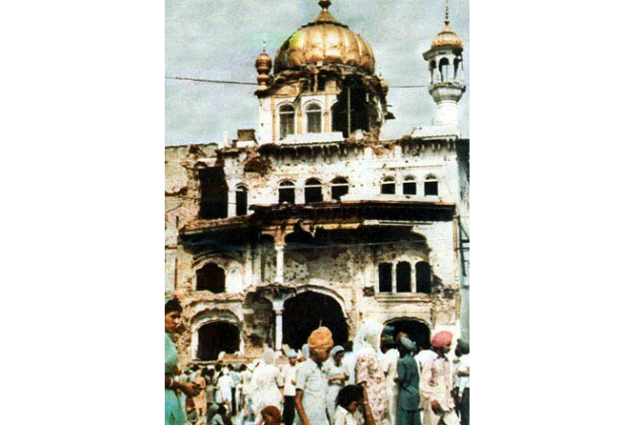Abstract:
It is claimed that the Khalsa is "perfectly modulated." "All that is necessary is for somebody to keep their eye on the correct course." Jarnail Singh Bhindranwale was that individual. The incident he sparked, the Indian army strike on the Golden Temple in June 1984, is the source of the raging resistance, which is largely but not entirely dominated by Khalsa Sikhs. In this research article, I look at the circumstances immediately before the conflict, as well as the tussle itself and the aftermath. If the previous uprising persists or disappears, the 1984 "holocaust" is likely to resound in Sikh culture for a long time. Maj. Gen. Brar said during the launch of an army mission code-named "Bluestar" on Indian territory, "It wasn't against Sikhs, but terrorists." Around June 1 and 8, 1984, Operation Bluestar was rolled out just to evict violent political leader Jarnail Singh Bhindranwale and his supporters from the Harmandir Sahib (Golden Temple) complex in Amritsar, Punjab.
After unsuccessful talks with militants, Indira Gandhi, the then-Prime Minister, gave the contentious Operation the clear run on June 1, 1984. Indira Gandhi was assassinated by her Sikh security guards barely five months after the conflict started, and it was difficult not to understand that. The article starts by outlining the Operation and its key motivations, then links the activities to major groups, such as how the Khalistan Movement sowed the roots of emergency in 1975, until switching to the constitutional framework and extending that to each part of the decade-long turmoil. The Armed Forces Special Powers Act 1983, Article 19, Article 15, the formations of SPG, Black-cat commando forces, and other influential legal aspects are discussed in the study.
INTRODUCTION
"The liberty of a democracy is not safe if the people tolerated the growth of private power to a point where it becomes stronger than the democratic state itself. That in its essence is fascism: ownership of government by an individual, by a group, or any controlling private power." ~ Franklin D. Roosevelt

Photo by Naveed Ahmed on Unsplash
Operation Blue Star was a strategic mission directed under Indira Gandhi, the then-Prime Minister, to capture Sikh rebels who'd been stockpiling arms in Amritsar's Golden Temple and reclaim possession of the shrine. In answer to the breakdown of peace and justice in Punjab, the operation was initiated. The Khalistan Movement laid the groundwork for Operation Blue Star. The Khalistan Campaign was a radical Sikh populist agitation that aimed to establish a sovereign Sikh state within India's existing North-Western Republic. The Indian Army's first disputed move occurred from June 1 to June 8, 1984, on Gandhi's instructions to remove "Sant" Jarnail Singh Bhindranwale, a separatist religious leader of the Sikhs who had "occupied" the Harmandir Saheb district with the aid of local gangs between July 1983 and June 1984. Bhindranwale's rapid growth in Sikh group relations was aided in part by the Punjab Congress's secret support in splitting the Akali Dal, a Sikh ethnic socio-religious party positioned to defeat the Congress in 1980 elections.
Bhindranwale was reportedly selected for this position by none other than Giani Zail Singh, who led the Punjab Congress at the time at the request of Gandhi's son and proclaimed successor, Sanjay Gandhi. Bhindranwale, who led the Damdami Taksal, an academic program for the training of young Sikh priests, quickly established himself as a person with his theories for restoring a protestant Sikh position based on militant power.
Indira Gandhi, eager to eliminate Jarnail Singh from authority, took a series of bold and contentious actions that culminated in the Prime Minister's assassination. Operation Bluestar was largely viewed as Madame Gandhi's greatest social misjudgment, as well as her ultimate fight for the position of control and supremacy.
Background of the operation
Religious fear reigns over:
Bhindranwale established the "Dharam Yudh Morcha'' in August 1982, which advocated for the acceptance of the 1973 Akali Dal Anandpur Sakhib Resolution, which advocated for the restoration of a puritanic type of Sikhism. In July 1983, he was admitted to Bhindranwale. S. Longowal, the leader of the Guru Nanak Niwas Guru at the Golden Temple, gave him an immersive system overall entrance to the Sikh community's most important shrine. In Bhindranwale, a disgruntled ex-Indian Army officer,' General' Shahbeg Singh, employed his helping forces to secure the Gold Temple site with automatic weapons and anti-tank missiles.
The abuses of power of his supporters grew with each day, culminating in the assassinations of key figures such as A. Atwal and D. S. Atwal. On April 23, 1983, the G. I. Punjab Police opened fire on the Temple Complex in the middle of the day.
Strategy for the operation:
Gandhi was compelled to accept a more extreme way to remove the militants from the Golden Temple as a result of Bhindranwale's vehement refusal of a diplomatic solution. Lt. Gen. Kuldeep Singh Brar, guided by Lt. Gen. K. Sundarji and Army Chief Gen. A. S. Vaidya, devised a model rescue strategy, which culminated in Operation Blue Star, guided by Lt. Gen. Kuldeep Singh Brar and supervised by Lt. Gen. K. Sundarji and Army Chief Gen. A. S. Vaidya. The real mission was divided into two major sub-operations: Operation Woodrose, which was designed to circumvent any attack by Bhindranwale supporters from the Punjab region, and Operation Metal, which was designed to secure the Golden Temple for the Government of India .
The step-by-step action:
The mission started on June 1st when the military services engaged in firefights with machine-gun militants to protect the Harmandir Sahib Complex. The army surrounded the Temple complex and decided to destroy Gen. Shahbeg Singh's outer defensive lines. Tanks and heavy weaponry were also rushed to the complex, as were combat planes that provided real reports to military commanders.
On the 4th of June, a report prepared by G. S. Tohra , the veteran head of the SGPC, entered into talks with Bhindranwale on behalf of the government, and a short-lived ceasefire agreement was declared. The failure of the talks, however, resulted in the reinstatement of violence, with fire on the 5th of June causing significant casualties to the Indian army, including the loss of three tanks, as Army Forces sought to protect the Akal Takht. The army encountered more resistance for the next two days, with rebels attempting to shoot till the 7th of June when the military took control of most of the Temple complex.
Resultant damage:
A civil battle began between the army and a small number of encased rebels between June 8 and 10. Operation Blue Star resulted in the deaths of 700-800 troops and over 500 militants, including Bhindranwale, who was also reportedly killed in the fighting. About 5,000 civilian deaths have been reported by state-run media.
The Khalistan movement is gaining popularity:
The Khalistan movement, which had been supported and facilitated by ISI and Orthodox Sikh organizations in Pakistan over the following years, had a larger influence on global politics as a result of Operation Blue Star. Because of the damage and destruction of portions of the Akal Takht, as well as the substantial deaths of Sikh pilgrims, Indira Gandhi was the most resentful of her participation in Operation Blue Star. The alleged intrusion of military troops with boots into the complex and the deliberate "devastation" of scriptures of Sikh texts, which were claimed to have been deliberately destroyed on the order of the army, humiliated Sikh sentiments. These accusations, according to many sources, fuel a climate of mistrust toward the government, which led to Indira Gandhi's accomplices being assassinated in less than four months.
Assassination Of 31st October 1984:
Indira Gandhi's life has been put in jeopardy as a result of the Blue Star activity, triggering the first removal of Sikhs from her guard by the intelligence service. However, she claimed it would increase her anti-Sikh image in the newspapers and offer fuel to her critiques. She persuaded the SPG to restore its Sikh guard, especially Beant Singh, her personal preference. As a result of these factors, Beant Singh and Satwant Singh assassinated her on the morning of October 31, 1984, using a pistol and a Sten rifle to shoot 36 bullets at close range.
Even after Gandhi's assassination, the Sikh community's issues deteriorated. When reports came out that her assassins were Sikhs, a disastrous anti-Sikh riot broke out in the suburbs of Delhi on October 31, with prominent Congress leaders’ allegedly teaching anti-social conduct.
Aftermath & the long term effects
After the attack, President Zail Singh made a return to the main temple and was fired at by a gunman from one of the tower structures that the military had not yet secured. A bullet struck an army officer supporting the president in the shoulder. The mission also resulted in the execution of Prime Minister Indira Gandhi by two of her Sikh security officers on October 31, 1984, to take revenge and sparking the 1984 anti-Sikh riots. Sikhs were killed in large numbers across India, mostly in the capital city Delhi as well as in other big northern cities, experiencing huge distinctions in society between the Sikh community as well as the Indian administration Under the Pressure of Sikh claims, the military separated from Harmandir Sahib later in 1984. The bombing of an Air India flight in 1985 is assumed to have been a retaliatory act. Two Sikhs, Harjinder Singh Jinda and Sukhdev Singh Sukha assassinated General Arun Shridhar Vaidya, the Chief of Army Staff at the time of Operation Blue Star, in Pune in 1986. Both were given execution sentences and were executed on October 7, 1992.
Sikh rebels seized and proceeded to use the shrine premises in March 1986, necessitating again another police operation known as Operation Black Thunder. On May 1, 1986, Indian paramilitary police stormed Harmandir Sahib and detained 200 militants who had been occupying the shrine for more than three months. The paramilitary police carried out a 12-hour operation to retake Harmandir Sahib in Amritsar from several hundred rebels on May 2, 1986, but almost all of the major radical leaders decided to escape. The Indian government directed residents to vacate the premises around the temple in June 1990 to avoid rebel activity near the temple.
Congress's Involvement & party politics:
When it comes to its support for the Khalistan movement, Congress has always been deceitful, even though it was instrumental in its commencement. The role of Congress can be seen in a variety of ways. Indira Gandhi, the then-prime minister, may not have been aware of Jarnail Singh Bhindranwale, but Zail Singh, the former Congress chief minister and later president, was in constant touch with Bhindranwale. It has also been said that Bhindranwale provided economic and strategic assistance from Congress to disrupt the Akali Dal, which was promising to be a disruptive force to the Congress' power and control in Punjab.
The Akali Dal contested and opposed the crisis imposed by then-Prime Minister Indira Gandhi in 1975. During the crisis, the Akalis initiated the first protest march in the world, "Campaign to Save Democracy," in Amritsar.
Bhindranwale also endorsed Congress representatives Gurdial Singh Dhillon and Raghunandan Lal Bhatia in the 1980 polls. Bhindranwale was not particularly influential at first, but Congress' initiatives in the early 1980s elevated him to the status of a national candidate. This later proved to be a misjudgment, as Bhindranwale's nationalist public goals were famous among the area's agricultural Jat Sikhs. Even after gaining control in the 1980s, Congress was helpless to hold Jarnail Singh Bhindranwale and his activities under control.
Jarnail Singh Bhindranwale was a separatist with extreme beliefs from the start, and it can be safely assumed that he used Congress as a forum to gain prominence and widely propagate his agendas. He rampaged Punjab, preparing it for war with the Union of India, which culminated in Operation Bluestar, with the aid of influential country leaders.
Prime Minister Indira Gandhi was assassinated by her Sikh bodyguards, changing the trajectory of India. If Indira Gandhi had chosen a different, less dangerous course, such as the intelligence agencies' "Operation Sundown," she might not have been assassinated because of her response to Operation Bluestar, and she might have served out her full term. As a result, we can easily and deeply conclude that Indira Gandhi's single "Go Ahead" for Operation Bluestar was fatal for herself and the direction she set for India.
Conclusion
The democratic system moved across a difficult time throughout that period, but somewhere along the way, it forged what India is today, strengthened the country, re-ignited communal cooperation, and re-ignited the world's largest democracy. Even fire, which provides light and energy, may have negative implications if it is used improperly; for example, it can be used to cook food or to burn down a building, either deliberately or accidentally. The argument is that everyone has a positive and negative side, and Indians are known for their strength and cohesion. The assassination further prompted the creation of the Special Security Force, which continues to defend the prime minister and all previous prime ministers and presidents to this day.
It also contributed to a request for the creation of a combat organization that was specifically educated in target and neutralize activities on Indian soil with minimal collateral damage, and thus the specialized unit of the so-called "Black cat" commando force was created, which we saw in action in the 26/11 attacks. The campaign also demonstrated how the army supervised and monitored the media during the mission, igniting a contentious debate about media freedom and the protection of constitutionally guaranteed fundamental rights.
Disclaimer: This article is based on various facts and references taken from research papers, blogs, documentaries, and studies it doesn’t attempt to hurt any religious sentiments and doesn’t discriminate among any caste, religion, gender, sex, or place of birth. The author and Reflections.live team is not liable for any sort of legal action against them. By reading this blog, readers give consent that the views in this article are opinions based and readers might agree or disagree with the same for which they can’t sue the author or Reflections.live team or people associated with this blog directly or indirectly, for any sort of disagreements in case they have. Further Reflections.live team and the author have high regard and respect for all religions. Thanks for taking out crucial time and happy reading!
. . .
References:
- PAROHA, U. (1993). TERRORISM IN PUNJAB: ORIGINS AND DIMENSIONS. The Indian Journal of Political Science, 54(2), 238-250. from ezproxy.svkm.ac.in
- G.B.S. Sidhu, The Khalistan Conspiracy: A Former R&aw Officer Unravels The Path To 1984, HarperCollins India, 2020, pg.121-127.
- Judge, P. (2004). Politics of Sikh Identity and Its Fundamentalist Assertion. Economic and Political Weekly, 39(35), 3947-3954. from ezproxy.svkm.ac.in
- Cynthia Keppley Mahmood (1996) , Fighting for Faith and Nation: Dialogues with Sikh Militants, University of Pennsylvania Press, pp.150-162
- Singh, G. (1996). Punjab since 1984: Disorder, Order, and Legitimacy. Asian Survey, 36(4), 410-421. doi:10.2307/2645407
- Van der Veer, P. (1996). The Ruined Center: Religion and Mass Politics in India. Journal of International Affairs, 50(1), 254-277. from ezproxy.svkm.ac.in
- Sadullah, A. (1986). TERRORISM : A POLITICAL WEAPON. Pakistan Horizon, 39(4), 91-97. Retrieved April 3, 2021, from ezproxy.svkm.ac.in
- Patel, P. (1987). VIOLENT PROTEST IN INDIA: The Punjab Movement. Journal of International Affairs, 40(2), 271-285. from ezproxy.svkm.ac.in
- Sinai, J., & Singh, S. (2019). Perspectives on Terrorism, 13(3), 170-171. from ezproxy.svkm.ac.in
- Singh, G. (1994). Complexities of the Question of Sikh Nationality. Economic and Political Weekly, 29(29), 1877-1882. from ezproxy.svkm.ac.in
- Singh, P. (2007). The Political Economy of the Cycles of Violence and Non-Violence in the Sikh Struggle for Identity and Political Power: Implications for Indian Federalism. Third World Quarterly, 28(3), 555-570. from ezproxy.svkm.ac.in
- Kundu, A. (1994). The Indian Armed Forces' Sikh and Non-Sikh Officers' Opinions of Operation Blue Star. Pacific Affairs, 67(1), 46-69. doi:10.2307/2760119
- Roosevelt, Franklin D. (1941). Public Papers of the Presidents of the United States: F.D. Roosevelt, 1938, Volume 7, p.305






